
The Life Through the Ages Dioramas, once housed at the University of Michigan Museum of Natural History, offered snapshots of different environments throughout Earth’s history. Each diorama gives viewers a glimpse of some of the plants and animals which called Earth home millions of years ago.
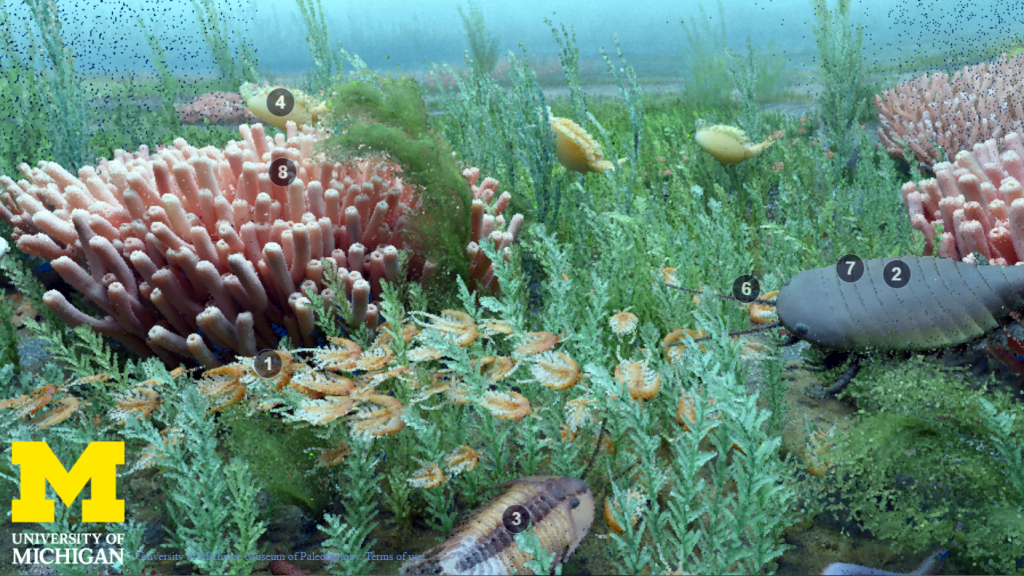
Cambrian Period
541 to 485 Million Years Ago
During the Cambrian Period, the supercontinent of Rodinia began to fragment and the climate was mild, but land was still barren without land plants. Ocean oxygen levels rose, and skeletonized, mobile animals evolved in a rapid diversification event called the “Cambrian Explosion.” Many animal groups appeared for the first time during this period.
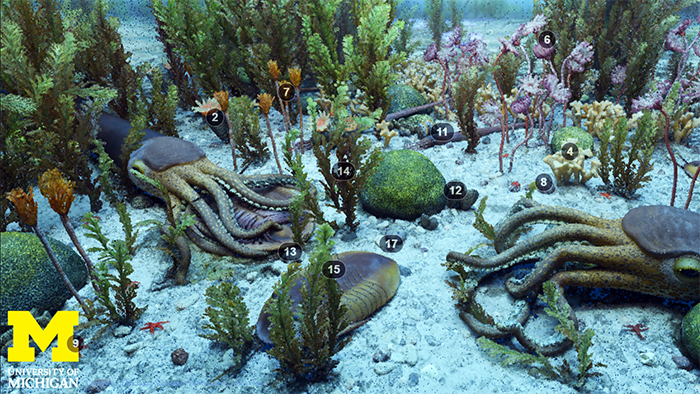
Ordovician Period
485 to 444 Million Years Ago
During much of the Ordovician Period, areas of what would become North America were covered by shallow seas. Many groups of marine organisms diversified in this period, increasing the number of species. The earliest evidence of land plants comes from the Ordovician, and they may have caused the expansion of glaciers in the Late Ordovician. One of the “Big Five” extinction events occurred at the end of the Ordovician.
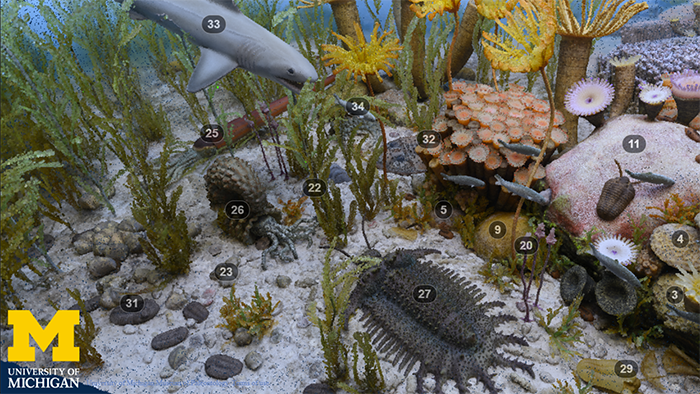
Devonian Period
419 to 359 Million Years Ago
During the Devonian Period, oxygen levels approached modern day levels and coincided with an explosion of floral and faunal life. The first tetrapods and the first jawed fish also appeared during this time. Marine life during this time was dominated by brachiopods and corals, many of which are represented in this diorama. At the end of the Devonian, there was another mass extinction which predominantly affected marine life.
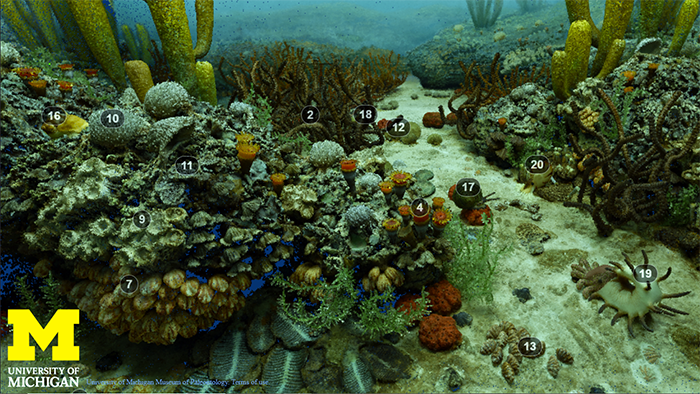
Permian Period
299 to 252 Million Years Ago
The Earth during the Permian period consisted of a large, arid supercontinent called Pangea surrounded by a single ocean. In this ocean, brachiopods and ammonoids thrived, but corals were lessening. All of these groups are represented in this diorama. The Permian period ended with the Earth’s largest mass-extinction event, in which almost 90% of all species went extinct.
Explore the 3D Diorama (Ocean)
Explore the 3D Diorama (Terrestrial)
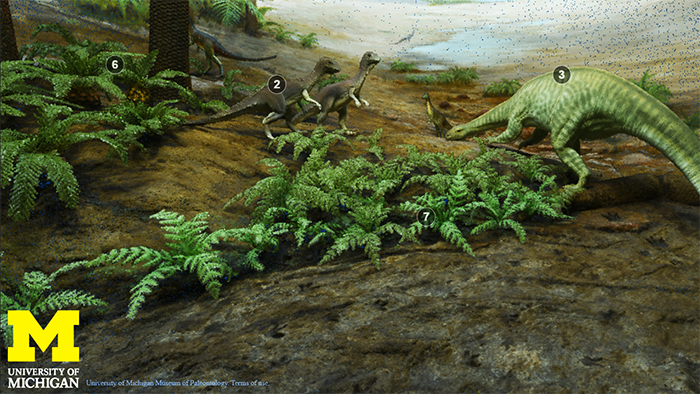
Triassic Period
252 to 201 Million Years Ago
During the Triassic period, a large landmass called Pangea persisted, and diversity slowly recovered from the End-Permian extinction. Ferns and gymnosperms, particulalrly cycads, were common, and dinosaurs evolved in this period.
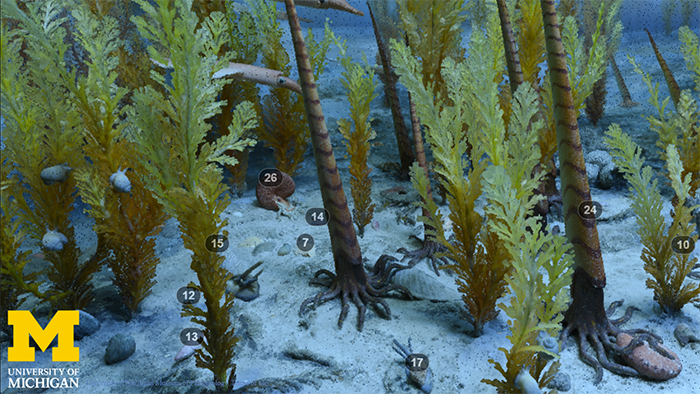
Cretaceous Period
145 to 66 Million Years Ago
During the Cretaceous Period, the Americas moved away from Eurasia and Africa as the Atlantic ocean expanded. In the oceans, mollusks thrived, while brachiopods declined and corals begin to look more like their modern relatives. This period ended when a large asteroid or comet hit Earth causing the second largest mass extinction event observed in the fossil record.


